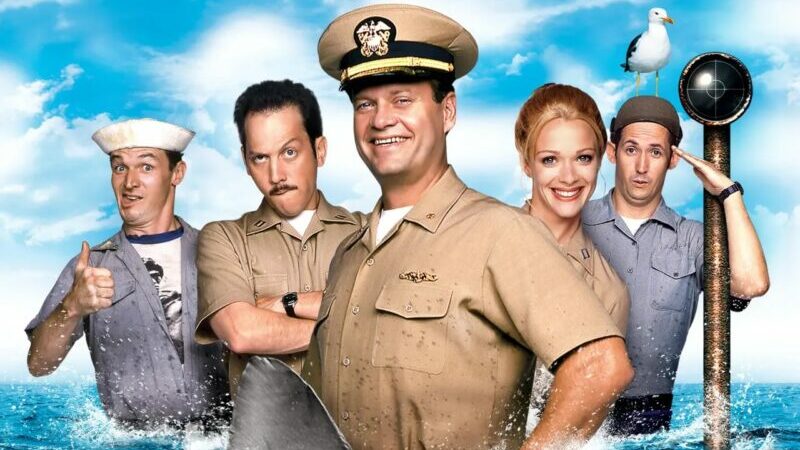Down Periscope is a submarine comedy; the Australian version is a comedic tragedy. Former Royal Australian Navy serviceman, Rex Patrick on the latest Defence debacle.
‘Down Periscope’ is a comical movie about an old decrepit submarine being turned into a winning capability. The real life ‘Down Periscope’ being played out in the Royal Australian Navy has an opposite plot and is a $30B tragedy.
Measure Twice, Cut Once
In 2019 the Navy decided to upgrade the search periscopes on the Collins Class submarines from an ‘analogue’ periscope device to a ‘digital’ optronic device. Subsequently, Defence entered into a contract with Raytheon for $381M to do the upgrade work.
At Senate Estimates in February, based on a tip, Senator Jacqui Lambie asked Defence officials if there were installation issues with the new optronics masts – she suggested they didn’t fit. They took the question on notice, and then didn’t answer it.
They have also failed, in the 90 days since I submitted a ‘measure twice, cut once’ FOI application seeking details about the installation plans and troubles, to come back to me with the results of that FOI submission (the statutory processing time frame is 30 days).
Yesterday, before Defence Estimates commenced, the Minister for Defence Industry announced the optronics mast upgrade will not go ahead.
Under questions from Senator Lambie this afternoon, the Chief of Navy denied that the decision not to proceed with the upgrade was related to an installation issue, but revealed they have spent $33 million dollar on the masts and will likely have to pay an additional break fee for the contract.
That’s 33 million wasted! Cha-ching!
But wait, there’s much more!
The sad thing is, the optronics mast waste is practice waste. Practice makes perfect, and Defence are certainly well versed at wasting large sums of money, letting the taxpayer shoulder the cost and national security be what it is.
Fifteen years ago, Prime Minister Kevin Rudd unveiled the 2009 Defence White Paper which included the planned replacement of the 6 Collins Class submarines with 12 future submarines.
Construction of the first future submarine was to begin in 2016, in time for it to be fully tested, commissioned and accepted into service, ready to replace the first retiring Collins Class submarine in 2024 and thereby avoiding a capability gap.
Defence dithered and dathered on a replacement solution, first considering a son-of-Collins design (and actively discrediting all off-the-shelf submarine designs available at the time) and then a Japanese submarine before contracting the French in 2016 to build 12 Attack Class submarines.
In September 2021, when Prime Minister Scott Morrison announced his AUKUS plans, the Attack class submarine program was cancelled. Unfortunately, a lot of the focus around that announcement was centred on the fallout between Morrison and French President Macron, which meant that the enduring loss of $4B (including an $830M compensation payment to the French), money spent not achieving anything, was almost lost in the shadows.
Cha-ching!
Collins lifebuoy ahoy
Along with the cancellation of the optronic mast and Tomahawk missile, the Defence Industry Minister (re)announced the Government would spend between $4B to $5B (officials later stated the cost would be $4.3B to $6.4B) extending the life of Collins.
The Minister, in (re)announcing the extension, cast the expenditure as an investment. But the truth is, if Defence had been capable of buying a submarine in the 15 years since the program was announced, this expenditure wouldn’t have been necessary if Defence had simply approached the future submarine in accordance with the 2009 plan.
So, hardly an investment, really just a waste.
Cha-ching!
Even more cost depths
The $4.3B to $6.4B cost of the life extension covers upgrades to the Collins main motor, diesels and switchboards, not the ongoing sustainment cost.
There is bad news. Coincidentally, on the day the Minister was (re)announcing the life extension project, the Chief of Navy was giving some advice to the Senate on the cost of keeping older ships going.
“The reality with the cost of ownership of warships is, there’s a slight premium at the beginning when you settle them into service and iron out any issues. Then that cost of ownership stabilises through life and then as they get older the cost off ownership increases, particularly as you are dealing with obsolescence issues and more frequent repair issues.”
The cost of Collins sustainment has risen to $769M this year, from $710M last year. It’s a situation that keeps getting worse and we should expect it will continue to get worse as we move forward.
Cha-ching!
Boats no better above surface
Last year, we learned that the future frigates, which was supposed to be a proven off-the-shelf vessel but ended up being a paper design, had gone from $45B for nine vessels (from an original $30 billion plan) to $65 billion.
The government’s response to this blowout was to decrease the number of ships purchased from nine to six. So, we were buying nine ships for $45 billion and are now getting six vessels for the same price.
Cha-ching!
And to rub salt into the taxpayers’ wounds, the Chief of Navy, under questioning from Senator David Shoebridge, conceded that the offshore patrol vessel fleet we are getting for $4.7 billion dollars is “not fit for purpose”. It’s a Navy vessel that has “limited utility in combat operations”. Thank you, Defence, and thank you, consultants, who analysed the market and advised them on the best way forward.
Cha-ching!
McHale’s Navy marooned
Senate Estimates has revealed a naval shipwreck. Ignoring the $30B in waste described above, as hard as that might be, between Senators David Fawcett and Shoebridge, it was established that if we had to go into combat in the next couple of years, we’d be in a lot of trouble. When the balloon goes up you have to fight with what you’ve got, not what you expect to get in 10 years.
With no new (usable) ships to be delivered before 2032, two of our eight ANZAC class frigates being decommissioned, submarine docking times on the increase and the Navy relying on the hope that we’ll get some developmental mine warfare capabilities online sometime in the next 5 years, the total likely combat capability available (taking into account that not every ship the Navy has in the water will be available) will be:
- 2 Collins submarines
- 2 Air Warfare Destroyers
- 4 ANZAC frigates
For the billions of dollars we’re spending on our Navy each year, we could station one combat vessel every 3,220 km along our 25,760 km coastline.
Senator Shoebridge summed up the situation to MWM slightly differently:
With what we have available I’m confident we could take on the inhabitants of Heard Island, assuming we can get one of our two supply ships going.
Rex Patrick is a former Senator for South Australia and, earlier, a submariner in the armed forces. Best known as an anti-corruption and transparency crusader, Rex is also known as the "Transparency Warrior."

